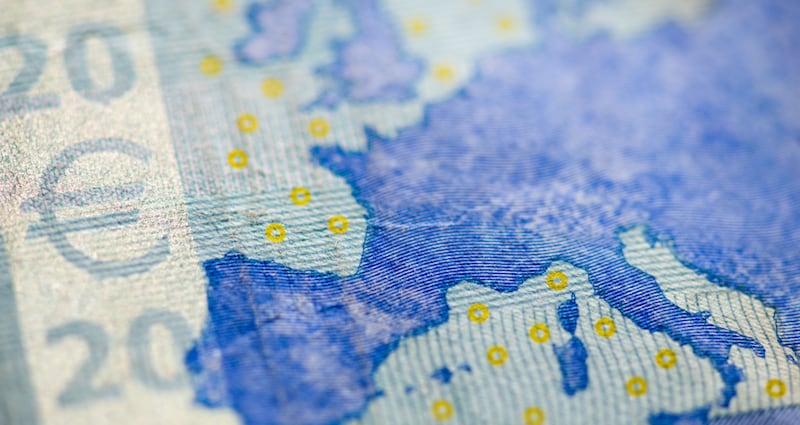The latest Central Bank figures showed that Irish household wealth reached a record high in the third quarter last year.
Is this really possible during a pandemic, when unemployment has soared and the economy has been closed for long periods ? Or are we seeing a big growing gap between the haves and the have-nots?
1. The figures

The headline figures show Irish wealth– or net worth as the Central Bank puts it – rising to a record €831 billion in the third quarter of last year , up by 1.7 per cent. That equates to €166,932 per capita of the population.
Net worth is a measure of the total assets of households – savings, investments and the value of property they own– minus liabilities, including mortgage and other debts.
Households debts have been on a steady downward trend since hitting a high of over €210 billion in 2008.
Household asset values have drifted up since house prices started to recover in 2013 – interestingly the total value of all assets is just 7 per cent higher than at the peak of the last boom in 2007/ early 2008, though back then overly inflated property prices were a big factor.
Household net worth of €831 billion is now 92 per cent above 2012 – when house prices bottomed out – but just 16 per cent above late 2007. It has been quite an economic cycle.
2. The pandemic factor
When the pandemic hit there were expectations that wealth would again take a hit as the cycle turned downwards again. There were forecasts of a fall in house prices – and a widespread hit to incomes which might have been expected to cut savings.
However it did not work out like that. House prices have drifted slightly upwards, on average. And while some sectors of the economy – and the people who worked in them – has been severely affected, much of the rest of the economy continued to operate.
The fall-out in some areas has been severe, but overall incomes and growth has held up much better than expected.
With much fewer places to spend their money for a lot of last year, those whose earnings held steady saved a lot more – and this outpaced a fall in savings from those who needed to dip into their reserves. People may also have saved for precautionary reasons, fearing for their job, for example.
The rise in overall savings has been remarkable, with €150.7 billion in deposit accounts in the third quarter, €4.5 billion up on the previous quarter. It is difficult to judge how much of this is excess savings – as opposed to the normal amounts people save – but clearly it is a lot.
To make just one comparison, the €12 billion rise in savings in the third quarter of last year compared to the final quarter of 2019 is roughly twice the rise seen in the same period a year earlier.
This has continued, with more recent data showing a record €13.4 billion rise in savings in the year to November.
The value of financial investments and insurance policies also rose due to strength in financial markets.
The figures do not measure land holdings or all pension wealth, so total household net worth is undoubtedly a big higher than the measured figure.

3. Is there a ‘but’?
Well, yes, to an extent. In terms of longer-term trends, you would expect that a large amount of the excess savings – whether driven by an inability to spend or precautionary motives – would start to be run down after the pandemic ends.
Some areas of spending, like overseas travel, could remain restricted for longer, we just don’t know).So to an extent this is a temporary bump upwards in savings.
The Central Bank also points out that the figures say nothing about the distribution of wealth. While a significant portion of those who have lost their jobs have been found by ESRI research to be younger, lower income people with generally lower savings, clearly not all fit into this category.
So many households will have had to dip into their savings, or go into debt. This makes the overall rise in savings all the more remarkable.
The working out of the pandemic will also affect the data in different ways – for now hard to predict.
As State supports fall for companies and business at some stage, then financial pressure could lead to further savings drawdowns by those affected , or wider economic nervousness.
The State has also taken on massive new debts, though the longer-term implications of this on the public finances – and thus on household incomes and in turn wealth – are not clear, given the rock bottom interest rates attaching to new debt.
4. Household debts
Household debts were more than twice disposable incomes before the 2008 crash, driven by massive mortgage borrowings.
This was reflected on the other side of household balance sheets by property holdings still valued higher in aggregate in 2007 than they are now. The household position looks more balanced now, with economists saying property values are not out of line with economic fundamentals and a better balance between financial and property assets.
Property remains the biggest asset class for households, in most cases the family home. However property assets were twice financial assets in 2007, while they are just 25 per cent higher in aggregate now.
In total household debts now represent around 106 per cent of disposable incomes , down from 211 at the peak of the last boom.
This moves Irish households down the EU ladder to around 6th in the EU league of 19 countries monitored in the Central Bank data. However a minority of households are at risk now.
Incomes have fallen and will drop more for those now returning to employment as State support are gradually withdrawn. Meanwhile while many see debt repayments deferred, the burden of debt remains .
5. What happens next?
Much depends on how the pandemic plays out. If the economy can gradually recover later this year and into 2022, then we may well escape the general hit to wealth seen during the financial crisis.
House prices are forecast to hold or rise a bit, given restricted supply and demand driven in part by cash deposits to hand. Savings will continue to rise for now as restrictions limit spending.
Economists hope that these savings will be run down and help fuel recovery at some stage, thus running down this aspect of stored wealth.
Were the pandemic to persist and the recession to deepen and spread, this could upset the picture.
And either way the wealth gap will grow with a minority seeing their savings and prospects upended by the pandemic while a majority or largely older people have held on to their cash and see their housing assets holding value.
It will be another key aspect of the post-pandemic inequity.











